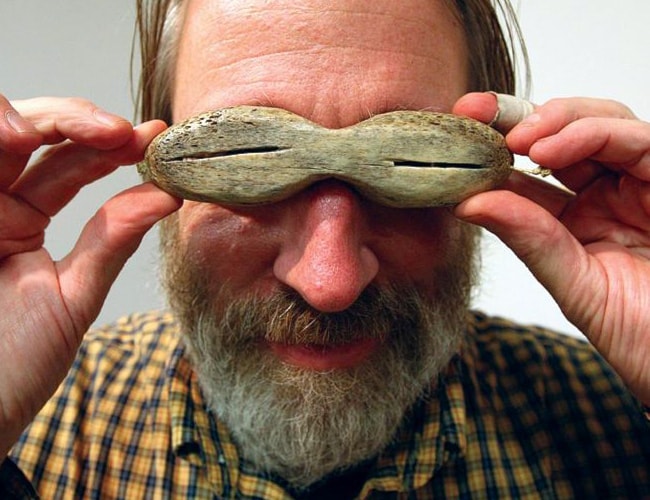It was an epic tale of adventure and sacrifice that forever changed the face of Canada.
Seventeen lives were lost during the Arctic expedition of 1913-18, when explorers and scientists endured hardship and deprivation to establish our country’s sovereignty of the North, and bring a greater knowledge of northern terrain and life to the rest of the world.
And yet, virtually no Canadian school children learn anything about the triumphs and tragedies of that Ottawa-funded expedition.
Paul Vardy, exhibitions preparer for the Canadian Museum of Civilization, admitted Canada could do a much better job of teaching its history and celebrating Canadian accomplishments. “Our claim to the Arctic was largely strengthened by that expedition, so in that sense, it was hugely important — why not teach it in school?” said Vardy. But if this lesson was taught in the classroom, the travelling exhibit Expedition Arctic, from the Canadian Museums of Civilization and Nature, which is running until mid-February at the Red Deer Museum and Art Gallery, would not come as such an intriguing surprise.
For instance, who knew, at the pre-dawn of the First World War, that the Canadian government was funding a massive expedition to the high Arctic that would involve more than 140 scientists and explorers from across Canada and around the world?
This included Inuit people and crew members from the U.S., Denmark, France, Australia — and even Fiji and the Cape Verte Islands.
The expedition was inspired by and led by Manitoba-born explorer Vilhjalmur Stefansson, whose northern party ended up mapping previously unidentified Arctic Islands and carrying the Canadian flag to the unexplored northwestern high Arctic.
The southern party of the expedition, led by zoologist Dr. Rudolph Anderson, conducted scientific research along the mainland coast of the Canadian Arctic, uncovering among many artifacts, a mammoth tusk, coral fossils, Inuit copper tools, animal pelts, bird specimens and samples of Arctic plant life.
“The expedition is one of the most compelling stories in the annals of Canadian Arctic adventure and research,” said the Red Deer museum’s executive director, Lorna Johnson, who believes the subject is very timely, given current concerns about climate change, conditions of northern life, resource exploration, and Canada’s sovereignty of the far north.
The expedition was also significant in its own time for being one of the first to use the skills and knowledge of Inuit people, said Kim Verrier, exhibitions co-ordinator for the Red Deer museum.
Seamstresses, such as Uttaktuak, were stationed in base camps to create protective winter clothing made of muskox hide and animal fur. Uttaktuak’s husband, a Portuguese whaler named Peter Lopez, also joined the expedition since hunters were needed to provide food sources for the crew members.
And international adventurers, such as George Hubert Wilkins, were invited on the trek. Wilkins was an Australian photographer who initially had hopes of going to the Antarctic, but jumped at this Arctic expedition because of opportunities he would have to document images of Inuit people for a film project.
Wilkins was one of the passengers travelling on the flag ship, the Karluk, which was the largest of three boats. The expedition’s greatest tragedy happened when the Karluk became trapped and crushed by ice, sinking off the coast of Siberia.
Everyone on board initially survived the January 1914 sinking but 11 people later succumbed to exposure and hunger while waiting for the arrival of rescuers the following autumn.
Wilkins survived only because he was off on a hunting party with Stefansson when the ship drifted and became trapped in the ice. But six additional crew members were to die for various reasons before the expedition wrapped up in 1918 — either by getting lost, drowning or coming down with the Spanish influenza.
Verrier was amazed, while looking at some of the rather primitive equipment the crew carried, such as Anderson’s canvas knapsack with leather straps, at the difficult conditions they must have endured.
“It was such a time of exploration, a time of discovery. ...”
Before the expedition, much of North America’s upper edges were a blank. Ultimately, the map of the Arctic was redrawn and the world’s understanding of its people and environment was expanded, as explorers returned with crates of natural specimens, and thousands of artifacts, sketches, documents, photographs, film and sound recordings.
Most of these materials were placed in national collections that now belong to the Canadian Museum of Civilization and the Canadian Museum of Nature.
The Red Deer museum’s show takes up two galleries and features more than 250 of these artifacts, including many on display for the first time. Besides the Inuit tools, and clothing, fossils, and plant and animal specimens, there’s film footage that was shot on sea, ice and land.
Verrier believes museum goers will enjoy “becoming” one of the members of the expedition by choosing a card with a photograph and some information about a crew member, and following this person’s journey through the museum display.
At the end, an audio clip will reveal what happened to whoever they were following.
Remember Wilkins, the Australian photographer? He not only came back from the expedition, but survived to go on many other adventures.
He became the first person to take photographs under polar ice from a submarine, helped explore Eastern Australia, was onboard the first flight between Alaska and Norway, and was knighted by King George.
After Wilkins died in 1958, his ashes were spread in the Arctic.
lmichelin@www.reddeeradvocate.com
